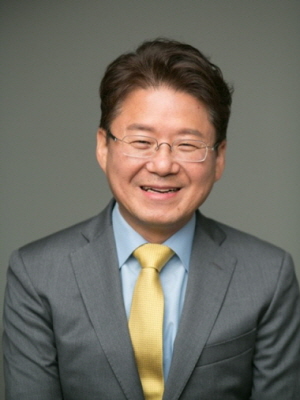전기차 시대 자동차 생산을 위한 문턱이 낮아져 플랫폼만 있으면 누구나 제작 가능한 지금, 미래 자동차 시장을 주도할 모빌리티 파운드리에 대해 김필수 대림대학교 교수가 이야기 한다.
전기차 시대 자동차 문턱 낮아져 플랫폼만 있으면 제작 가능
SW 주도 미래 모빌리티 시장, 주요 메이커들 파운드리 주목

지난 130여 년간 내연기관차는 이동수단의 대표명사로 등장하면서 선진국의 전유물로 주도권을 쥐면서 지금에 이어오고 있다고 하겠다.
특히 자동차는 부품수가 최대 3만개로 이루어진 융합물이고 과학기술의 총합으로 엔진과 변속기는 아무나 만드는 기술이 아닌 오직 선진 일부 국가만 소유하는 ‘수퍼갑’의 역할을 이어왔다고 하겠다.
그러나 10여년 전부터 내연기관차보다 역사가 오래된 전기차의 기술적 한계점이 극복되고 지구온난화 가스로 인한 무공해차의 보급이 필연적으로 의무화되면서 전기차는 수면 위로 본격 등장하였다고 하겠다.
지금은 전기차가 시작점 이지만 추후에는 수소연료전지차도 추가되면서 인류의 궁극의 이동수단으로 자리매김할 것으로 확신한다.
작년 후반부터 전기차의 판매가 주춤한 일종의 ‘전기차 캐즘’이 확산돼 글로벌 시장으로 확대되면서 전기차와 배터리산업이 주춤하고 있다.
이러한 현상은 내연기관차 대비 전기차의 가성비가 높아지면서 점차 해소될 것으로 보이며, 기술적 완성도에 따라 그 기간도 축소될 가능성도 높다고 하겠다.
늦어도 2028∼2029년 정도면 정상 궤도로 전기차 판매가 올라간다는 뜻이다.
물론 기득권을 지녔던 내연기관차 제작사의 저항도 매우 거세면서 치열하게 주도권 싸움이 진행되고 있는 현실이다.
물론 미국 대선에서 트럼프후보가 당선되면서 이 기간은 유동성은 더욱 커졌다고 하겠다.
기간은 조금 늦어질 수 있으나 머지않아 무공해차 시대가 온다는 뜻이고 그 선두주자가 전기차라는 뜻이다.
전기차 시대가 오기 시작하면서 각종 부작용도 발생하고 있다.
생산현장에서의 약 30% 이상의 일자리가 줄어들고 정비업 등 여러 분야에서 레드 오션화되면서 미래의 일자리가 크게 줄어들 가능성이 높아지고 있는 것이다.
이러한 각종 부작용을 최소화하면서 새로운 일자리 창출은 물론 무공해의 의미를 강조하는 숙제를 안고 있다고 하겠다.
전기차 시대가 오면서 가장 큰 현상은 자동차의 문턱이 없어졌다는 것이다.
즉 누구나 전기차 제작사로 변모하여 제작할 수 있고 경쟁력만 갖춘다면 글로벌 경쟁사로 등장할 수 있다는 점이다.
즉 엔진과 변속기 대신 배터리와 모터라는 단순 부품을 공급받을 수 있고 적절한 전기차 플랫폼만 있으면 제작이 가능한 것이 전기차이기 때문이다.
우리가 알고 있는 어린이 장난감도 바퀴, 모터, 배터리만 있으면 제작하는 만큼 문턱은 극히 낮다고 하겠다.
앞으로 전기차 제작을 위한 오픈 플랫폼이 범용화 되면서 더욱 문턱은 낮아지고 경쟁은 치열해질 것이다.
약 10년 일찍 시작한 중국은 초기에 500개가 넘는 전기차 제작사가 등장하다가 점차 경쟁이 치열해지면서 현재는 약 150개 내외로 줄어들었다.
중국 내는 물론 글로벌 시장이 더욱 치열해지면서 자연스럽게 경쟁력이 없는 전기차 제작사는 도태되면서 앞으로 약 20개 정도만 남을 가능성도 커지고 있다.
이제는 중국산 전기차와 배터리는 글로벌 시장을 호령하면서 점차 점유율을 높이고 있어서 미국이나 유럽 등 각국에서는 높은 과세 부과로 인한 차단 등 다양한 방법을 구사하고 있는 실정이다.
미래 자동차 산업은 모밀리티 산업으로 확대되면서 전기차를 중심으로 기존의 자동차 제작사의 전유물이 아닌 누구나 진입 가능한 시장으로 변모하면서 시장 판도가 크게 요동칠 것으로 예상된다.
이른바 ‘모빌리티 파운드리’ 또는 ‘전기차 파운드리’가 될 것이기 때문이다.
이에 대한 언급은 필자가 이미 7∼8년 전부터 각종 칼럼이나 방송 등에서 언급한 부분으로 미래 모빌리티 산업이 활성화되면서 등장한 신 내념이라 언급하곤 했다.
이제 그 시장이 본격적으로 열리고 있는 것이다.
약 두 달 전 현대차에서 ‘자율주행 파운드리’를 언급한 부분도 이와 맥락이 같다고 하겠다.
최근 글로벌 자율주행기술 순수기업인 구글 자회사인 웨이모와 협약을 체결한 이유도 지율주행차 관련 공동 진행이라고 할 수 있으나 여기에는 앞서 언급한 자율주행 파운드리를 통하여 원하는 차량을 공급한다는 측면이 강하다고 하겠다.
즉 웨이모는 자율주행 알고리즘을 최고 기술로 구현하지만 이를 움직이는 자율주행차는 직접 제작하지 않고 위탁생산하기 때문이다.
위탁생산은 누구나 하는 것이 아니나 전기차를 기반으로 라이더 센서와 레이더센서, 카메라 등 다양한 구현물을 통하여 완벽하게 제공할 수 있는 첨단 노하우가 필요하다고 하겠다.
BYD도 마찬가지이다. 이미 이에 대한 전기차 파운드리는 KGM 등에 단순한 LFP배터리뿐만 아니라 상당 부분의 파운드리도 함께 제공하는 시스템이라 판단된다. 이미 전기차가 늦은 토요타 등에서 일부 시험용으로 BYD에서 제공한다는 얘기도 나오고 있다.
역시 대표모델은 대만의 폭스콘이다. 이미 애플의 아이폰 하드웨어를 제작해 공급하고 있는 폭스콘은 지난 9년 전부터 애플에서 진행 중이었던 애플카를 하청 생산한다는 목표로 진행 중인 대표적인 기업이다.
물론 올해 초 애플에서 애플카 제작을 포기한다고 하였으나 투자 대비 효과가 기대했던 만큼 결과 도출이 어려워지자 우선적으로 급한 인공지능 폰 제작에 투입하면서 포기보다는 연기라 판단하는 것이 올바른 방향이라 하겠다.
애플카는 레벨4 수준의 자율주행차를 목표로 하였으나 생각 이상으로 기술적 완성도가 늦어지자 우선적인 분야에 투입한 사례라 하겠다.
역시 아이폰과 마찬가지로 애플카에 대한 하청 하드웨어를 생각했던 폭스콘은 현재 약 여섯 가지의 전기차를 완성도 높게 생산하면서 이미 두개 차종은 대만 내에서 판매가 진행 중일 정도로 완성도가 높은 전기차를 생산하고 있다.
이 회사의 정확한 목표는 전기차 파운드리라 할 수 있으며, 애플카는 물론 다른 글로벌 기업에서 요구할 경우 확실한 역할을 하겠다고 언급하고 있다.
역시 모빌리티 파운드리를 지향하는 기업이면서도 미래 모빌리티 시장에서 핵심적인 파운드리 기업으로 역할을 하겠다는 포부를 지니고 있다고 하겠다.
내년 중반 경기도 화성에 건설 중인 기아의 목적기반 자동차인 PBV 공장의 경우도 엄밀하게 언급하면 언제든지 파운드리를 해줄 수 있는 준비가 되어 있다고 하겠다.
미래 모빌리티 산업에서 브랜드 이미지를 고려하여 전기차를 기반으로 프리미엄 브랜드로의 생산도 당연히 영역을 크게 차지할 것이나 역시 한 분야로 성장 할 수 있는 역할이 바로 모빌리티 파운드리 시장이라 하겠다.
소프트웨어가 주도적인 역할을 할 미래 모빌리티 시장에서 이 알고리즘을 흡수하여 운행할 수 있는 파운드리 시장은 상당히 중요한 먹거리로 자리매김할 것으로 예상된다.
다양한 모델의 파운드리 시장을 누가 주도할 것인지가 미래 주도권을 쥐는 핵심적인 자리매김을 위한 우선권 역할을 할 것이다.
 지난 130여 년간 내연기관차는 이동수단의 대표명사로 등장하면서 선진국의 전유물로 주도권을 쥐면서 지금에 이어오고 있다고 하겠다.
지난 130여 년간 내연기관차는 이동수단의 대표명사로 등장하면서 선진국의 전유물로 주도권을 쥐면서 지금에 이어오고 있다고 하겠다.